Feeling nervous about the upcoming CBSE Class 10 Social Science (SST) exam on March 7th, 2024? Don't worry, we've got you covered!
This blog post unlocks the secrets of the 2023 SST Topper's Answer Sheet, offering a simplified approach to mastering the subject. We'll analyze the topper's strategies, helping you understand complex topics and answer questions effectively.
To make things even easier, we've included a free downloadable PDF containing both the 2023 SST question paper and the topper's answer sheet.
Get ready to ace your SST exam with the help of the top scorer and our simplified guide!
| Class | 10 |
| Board | CBSE |
| Subject | Social Science (SST) |
| Exam Date | 07/03/2024 |
| Content-Type | 2023 Topper's Answer Sheet |
| Session | 2023-24 |
| Official Website | https://www.cbse.gov.in/ |
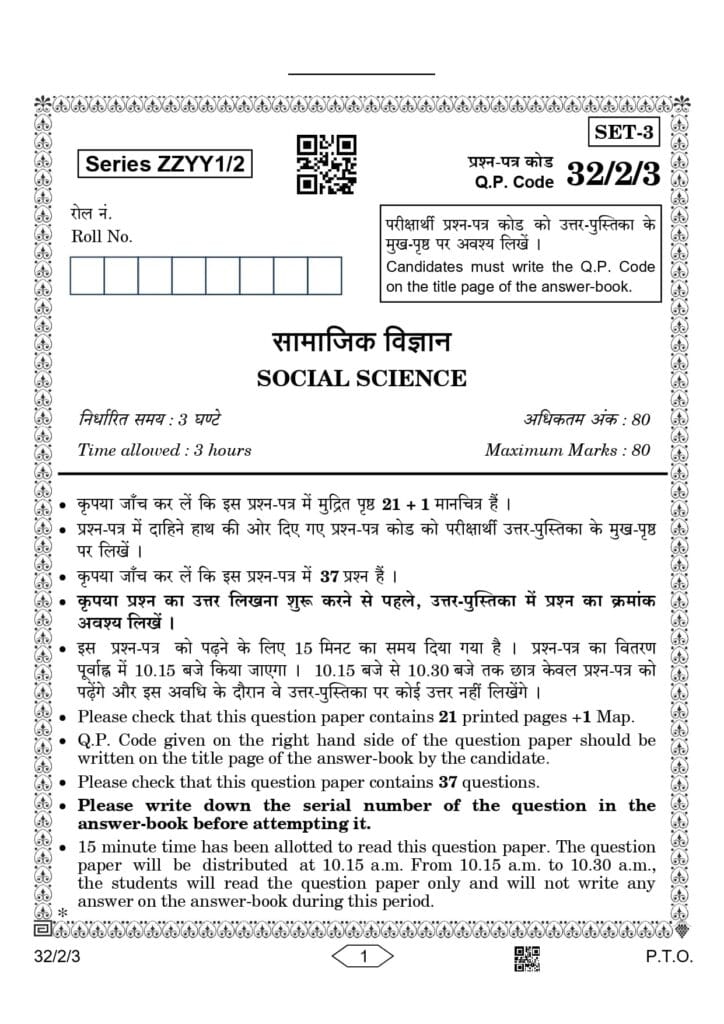
General Instructions :
Read the following instructions very carefully and strictly follow them :
(i) This questions paper contains 37 questions. All questions are compulsory.
(ii) This question paper comprises six sections Sections A, B, C, D, E and F.
(iii) Section A Questions no. 1 to 20 are MCQs of 1 mark each.
(iv) Section B Questions no. 21 to 24 are very short answer type questions, carrying 2 marks each. Answer to each question should not exceed 40 words.
(v) Section C Questions no. 25 to 29 are short answer type questions, carrying 3 marks each. Answer to each question should not exceed 60 words.
(vi) Section D Questions no. 30 to 33 are long answer type questions, carrying 5 marks each. Answer to each question should not exceed 120 words.
(vii) Section E Questions no. 34 to 36 are case-based questions with three sub-questions and are of 4 marks each.
(viii) Section F Question no. 37 is map-based, carrying 5 marks with two parts, 37(a) from History (2 marks) and 37(b) from Geography (3 marks).
(ix) There is no overall choice in the question paper. However, an internal choice has been provided in few questions. Only one of the choices in such questions has to be attempted.
(x) In addition to this, separate instructions are given with each section and question, wherever necessary.
SECTION A
(Multiple Choice Questions) (20x1=20)
1. Match Column I with Column II and choose the correct option.
| Column I | Column II |
| i. Union List | 1. Agriculture |
| ii. State List | 2. Computer Software |
| iii. Concurrent List | 3. Banking |
| iv. Residuary Subjects | 4. Education |
Options:
(a) i - 3, ii - 1, iii - 4, iv - 2
(b) i - 4, ii - 3, iii - 2, iv - 1
(c) i - 2, ii - 4, iii - 3, iv - 1
(d) i - 1, ii - 2, iii - 3, iv - 4
2. Which one of the following is an example of 'coming together federation'?
(a) India
(b) USA
(c) Belgium
(d) Spain
3. There are two statements given as Assertion (A) and Reason (R). Read both the statements and choose the correct option.
- Assertion (A): Belgium amended their constitution four times.
- Reason (R): Amendments were to enable everyone to live together in the same country.
(a) Both Assertion (A) and Reason (R) are true and Reason (R) is the correct explanation of the Assertion (A).
(b) Both Assertion (A) and Reason (R) are true, but Reason (R) is not the correct explanation of the Assertion (A).
(c) Assertion (A) is true, but Reason (R) is false.
(d) Assertion (A) is false, but Reason (R) is true.
4. Match Column I with Column II and choose the correct option.
| Column I (Port) | Column II (Type) |
| i. Kandla | 1. Riverine port |
| ii. Mumbai | 2. Deepest landlocked port |
| iii. Visakhapatnam | 3. Biggest port |
| iv. Kolkata | 4. Port developed after independence |
Options :
(a) i - 4, ii - 3, iii - 2, iv - 1
(b) i - 2, ii - 1, iii - 3, iv - 4
(c) i - 2, ii - 4, iii - 1, iv - 3
(d) i - 1, ii - 2, iii - 4, iv - 3
5. There are two statements given as Assertion (A) and Reason (R). Read both the statements and choose the correct option.
- Assertion (A): Agriculture and industry move hand in hand.
- Reason (R): Industrial development is a precondition for eradication of unemployment and poverty from the country.
(a) Both Assertion (A) and Reason (R) are true and Reason (R) is the correct explanation of the Assertion (A).
(b) Both Assertion (A) and Reason (R) are true, but Reason (R) is not the correct explanation of the Assertion (A).
(c) Assertion (A) is true, but Reason (R) is false.
(d) Assertion (A) is false, but Reason (R) is true.
6. Which one of the following soils develops in an area with high temperature and heavy rainfall?
(a) Red and Yellow
(b) Black
(c) Alluvial
(d) Laterite
7. Look at the picture given below. Identify the name of the senior litterateur shown in the image and choose the correct option.
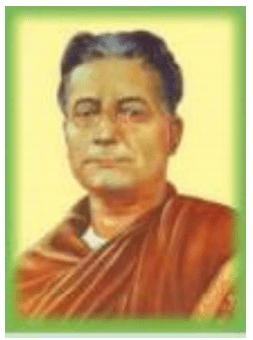
Options :
(a) Ram Mohan Roy
(b) Raja Ravi Verma
(c) Lakshminath Bezbaruah
(d) Gangadhar Bhattacharya
8. In which one of the following countries was 'mass production' an important feature in the 1920s?
(a) United States of America
(b) Poland
(c) France
(d) Japan
9. Choose the correct option from the following regarding Central Powers in the First World War:
(a) Germany, Austria-Hungary and Ottoman Turkey
(b) Britain, France and Russia
(c) Italy, Japan and Russia
(d) France, Austria-Hungary and China
10. Which one of the following ideologies were the European Governments driven by after the defeat of Napoleon in 1815?
(a) Socialism
(b) Conservatism
(c) Liberalism
(d) Romanticism
11. Which one of the following is a challenge of Globalisation?
(a) Access to New Markets
(b) Access to New Talent
(c) International Recruitment
(d) Disproportionate Growth
12. Which one of the following categories of urban households take the highest percentage of loan from the formal sector?
(a) Poor households
(b) Households with few assets
(c) Well-off households
(d) Rich households
13. Which one of the following is the modern form of currency?
(a) Paper notes
(b) Gold coins
(c) Silver coins
(d) Copper coins
14. Which one of the following is a feature of the unorganized sector?
(a) Terms of employment are regular.
(b) People have assured work.
(c) They have some formal processes and procedures.
(d) There are rules and regulations but not followed.
15. Natural products being changed into other forms is known as:
(a) Primary product
(b) Secondary product
(c) Tertiary product
(d) Quarternary product
16. Study the given table and answer the question that follows:
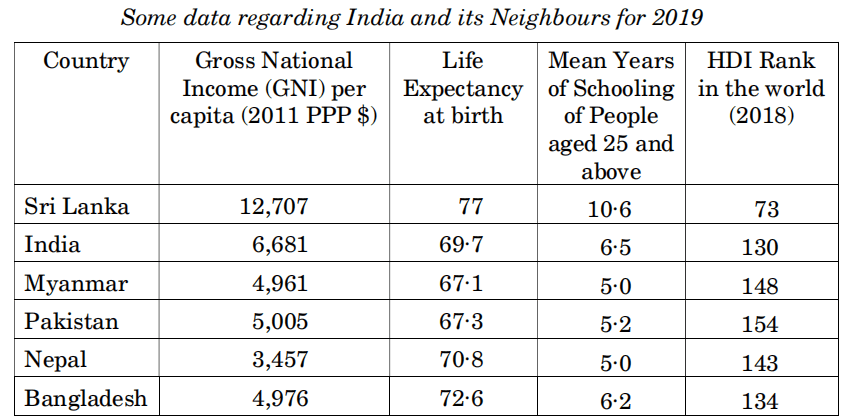
Which of the following countries has the highest level of 'Human Development Index (HDI)'?
(a) India
(b) Bangladesh
(c) Sri Lanka
(d) Nepal
17. Choose the correct option to fill in the blank.
For comparing countries, their __________ is considered to be one of the most important attributes by the World Bank.
(a) Education
(b) Income
(c) Health Status
(d) Living Standard
18. Which one of the following countries adopted a multi-party system?
(a) USA
(b) India
(c) China
(d) United Kingdom
19. Which of the following States is ruled by a regional party?
(a) Haryana
(b) Madhya Pradesh
(c) Odisha
(d) Rajasthan
20. In which one of the following regions is the participation of women in
public life the highest?
(a) Nordic countries
(b) Arab states
(c) European countries
(d) Asian countries
Ans.
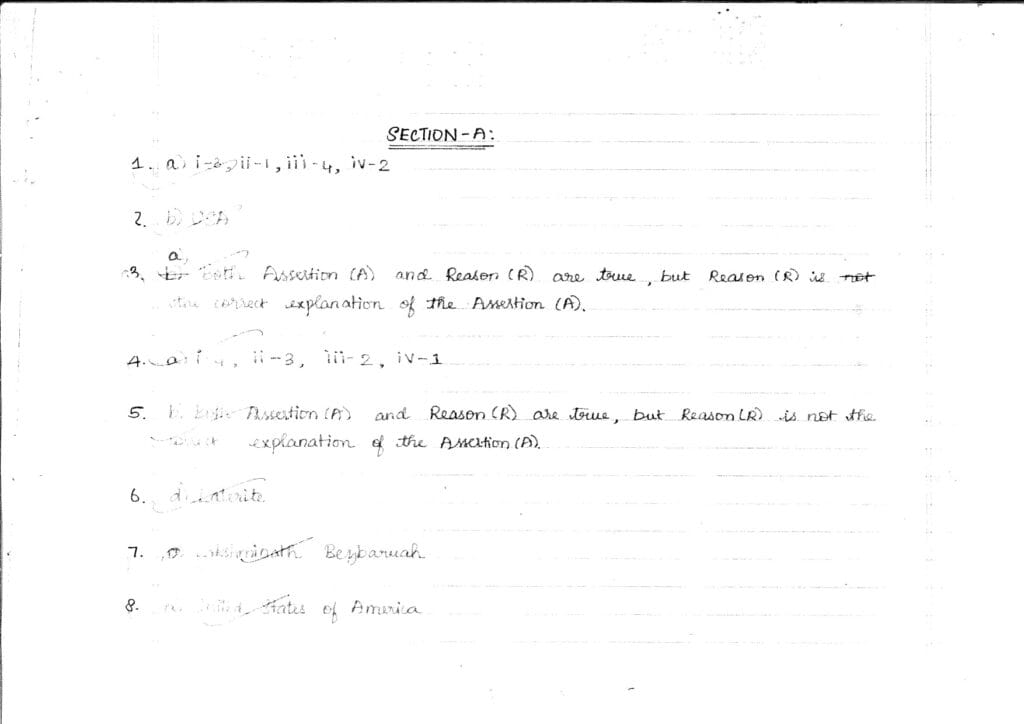
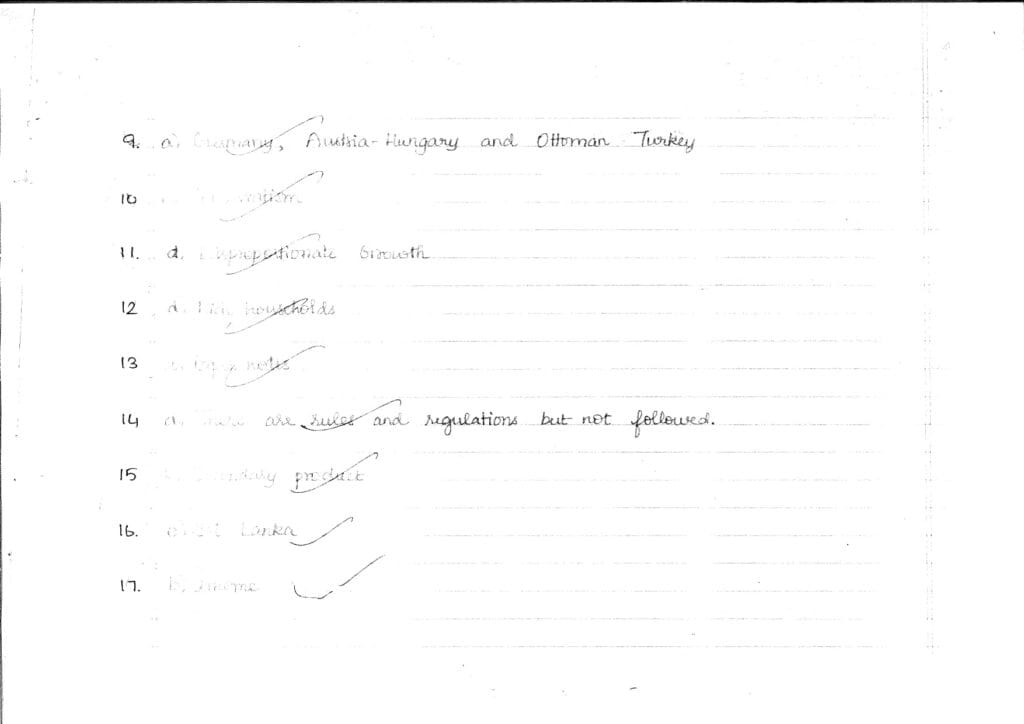

SECTION B
(Very Short Answer Type Questions) (4x2=8)
21. (a) Analyse the role of Chief Minister Cavour who led the movement to unite the regions of Italy.
OR
(b) Examine the ideas of liberal nationalism in Europe during the nineteenth century.
Ans.
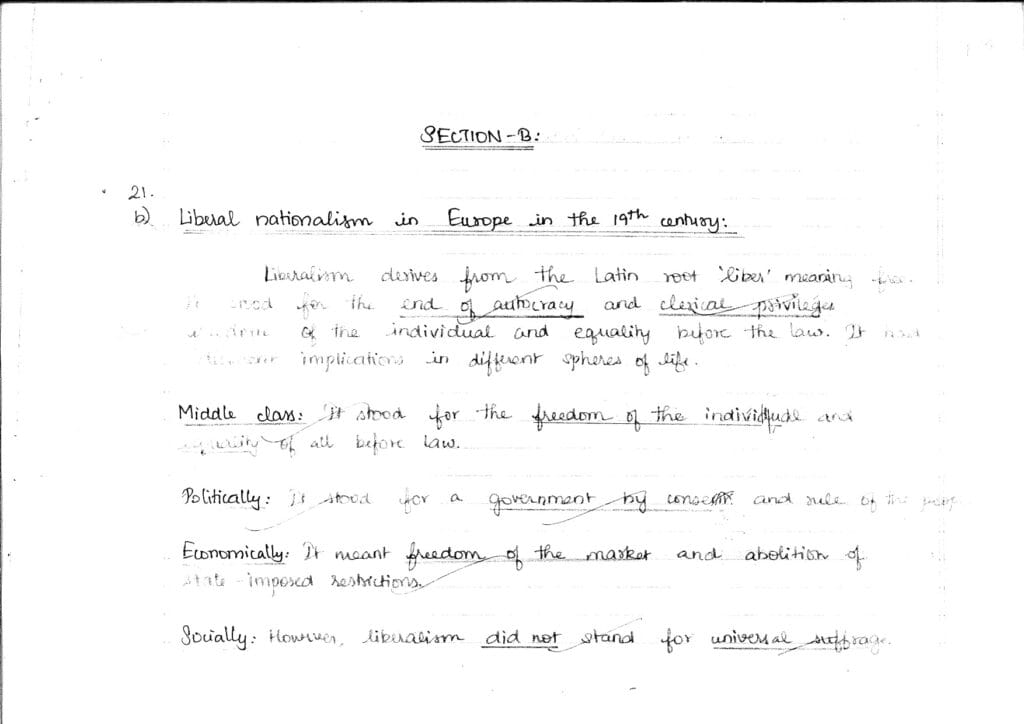

22. Differentiate between reserved and protected forests.
Ans.
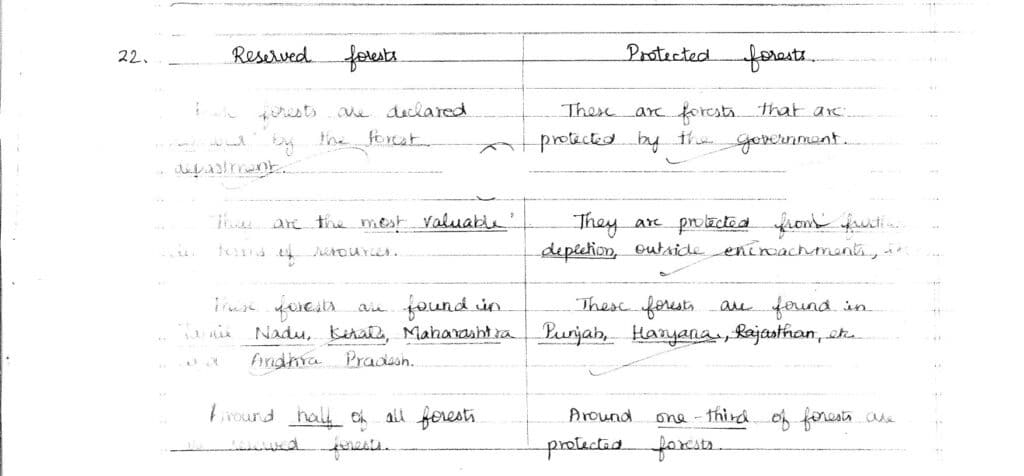
23. Why did the feeling of alienation increase among the Sri Lankan Tamils in 1956? Explain.
Ans.
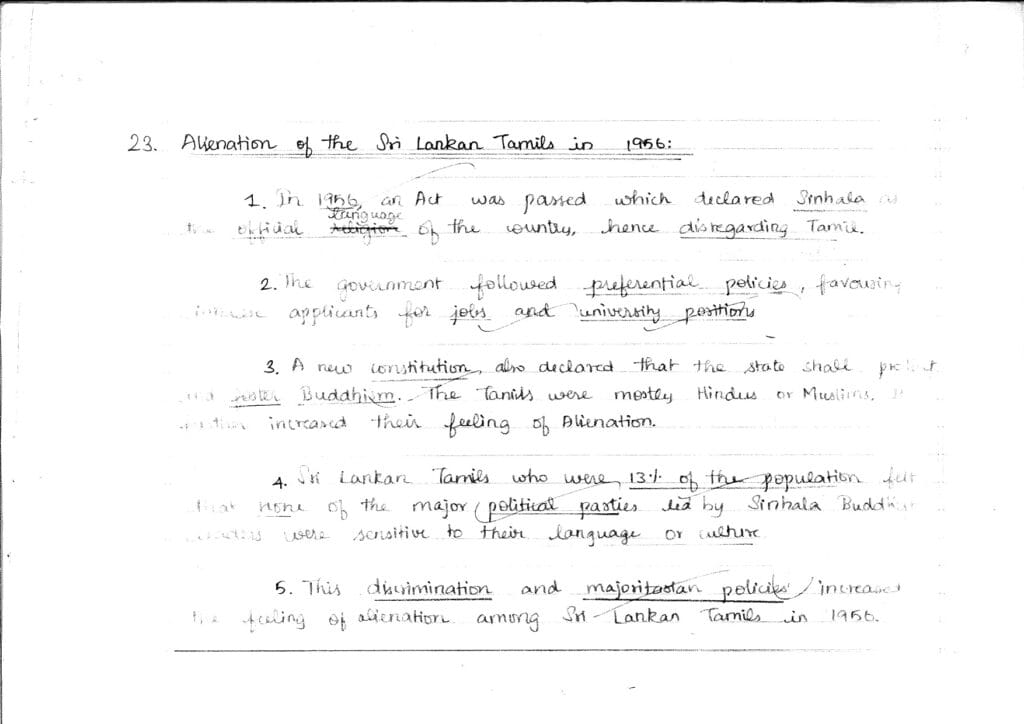
24. How does the use of money make it easier to exchange things? Explain with examples.
Ans.
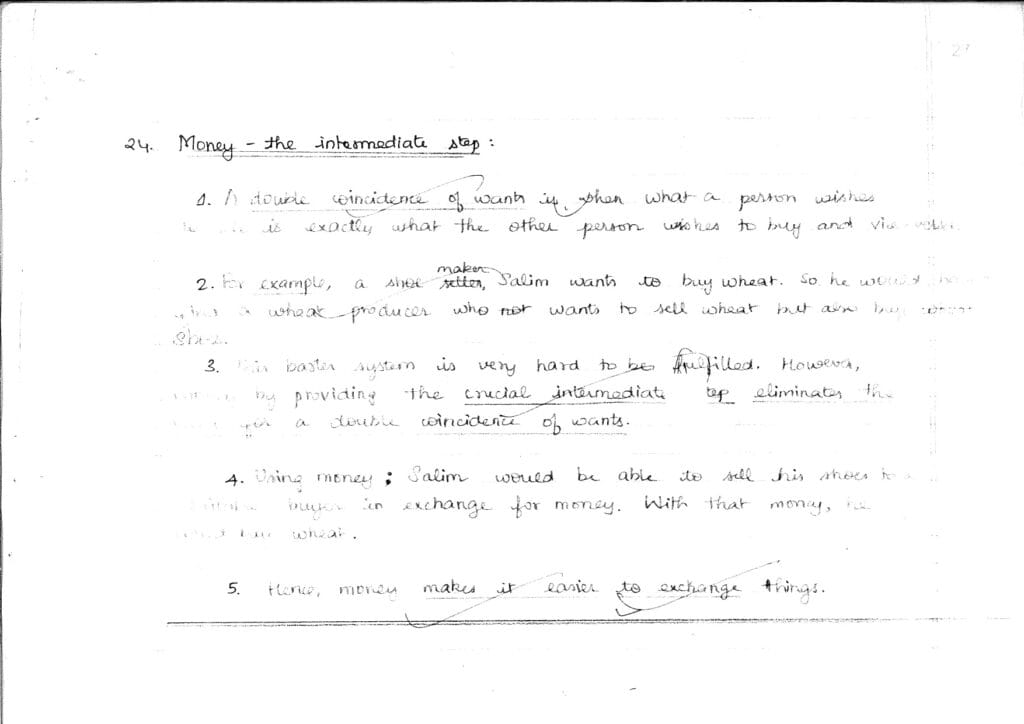
SECTION C
(Short Answer Type Questions) (5x3=15)
25. (a) How did print come into existence in Europe? Explain.
OR
(b) How did access to books create a new culture of reading? Explain.
Ans.
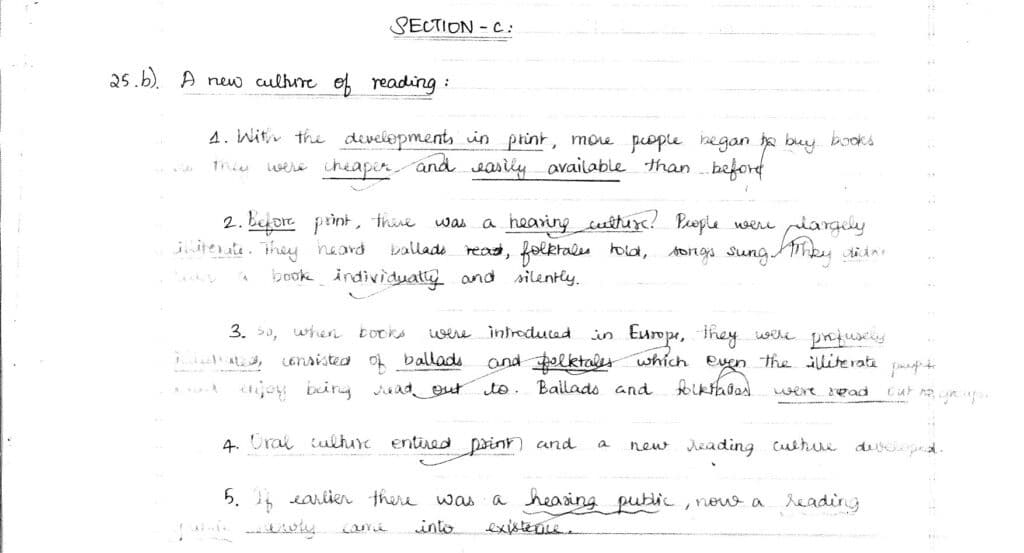
26. Explain any three characteristics of the Durg-Bastar-Chandrapur iron-ore belt in India.
Ans.
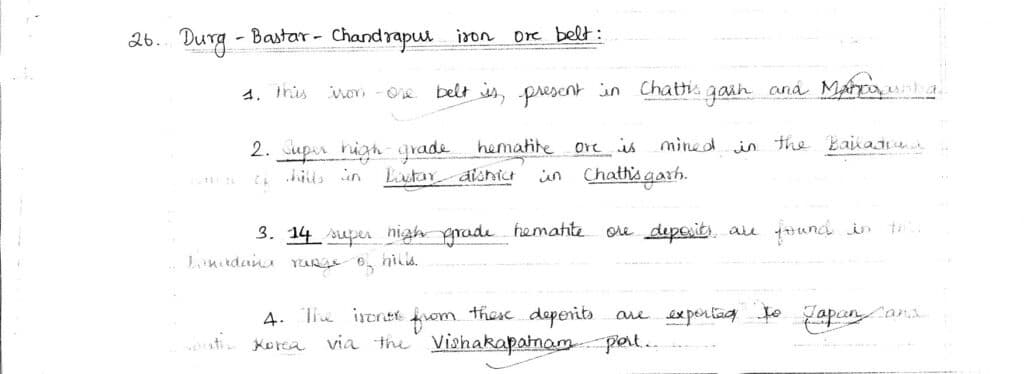
27. Explain any three constitutional provisions that make India a secular state.
Ans.


28. How can more employment be created/generated in India? Explain with examples.
Ans.

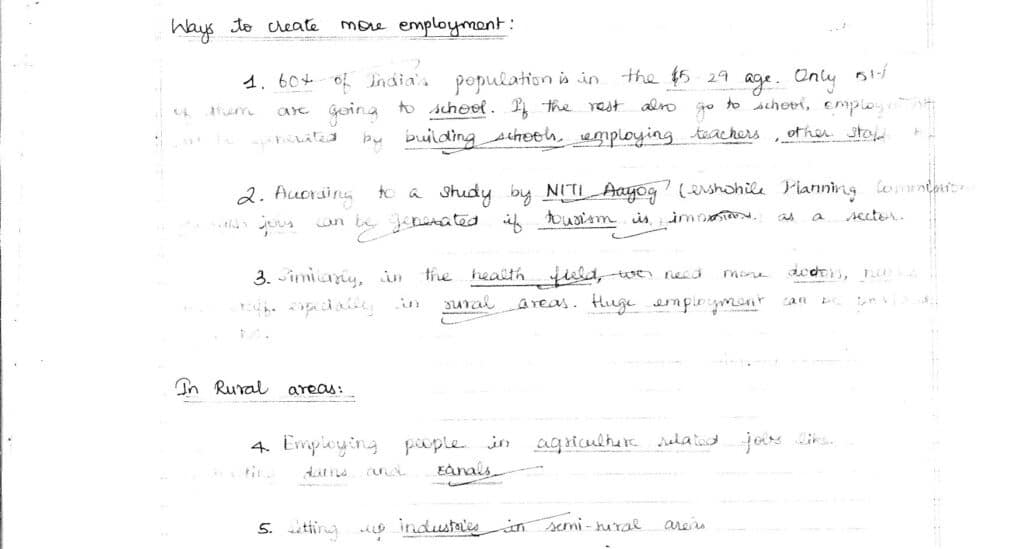

29. Examine the rising importance of the tertiary sector in India.
Ans.
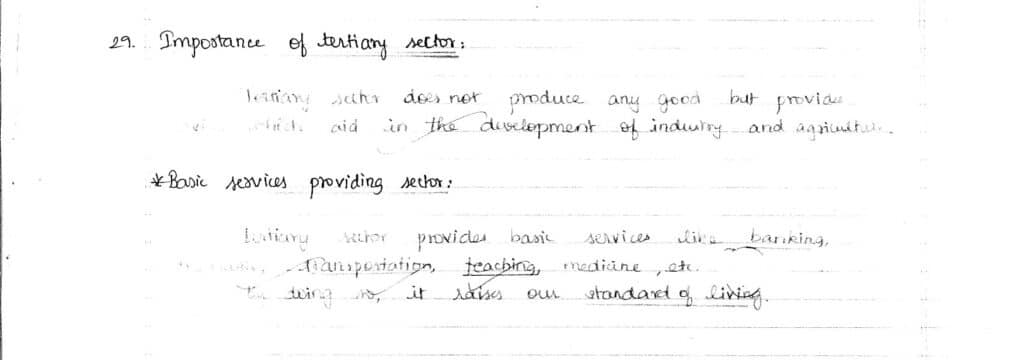
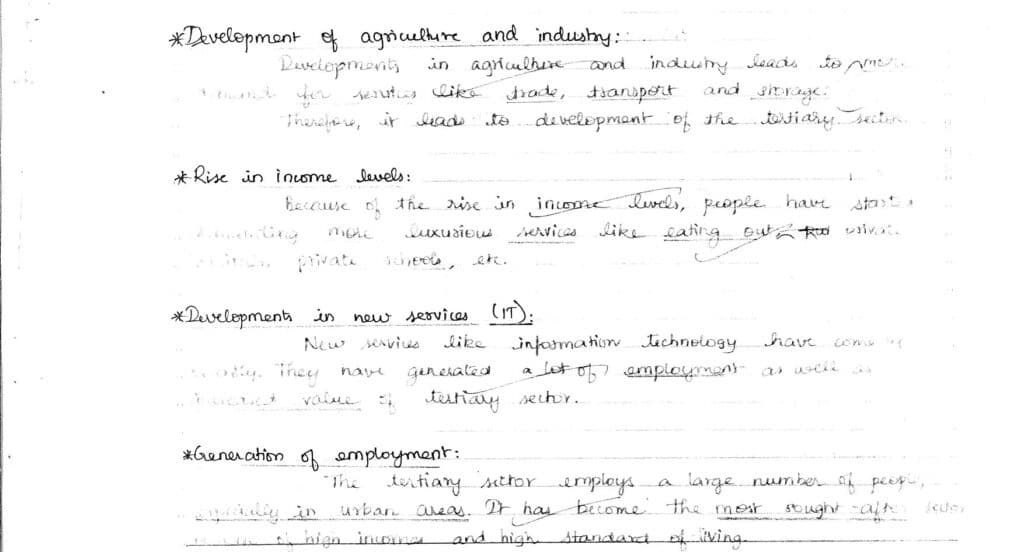
SECTION D
(Long Answer Type Questions) (4x5=20)
30. (a) "Plantation workers had their own understanding of Mahatma Gandhi and the notion of Swaraj." Support the statement.
OR
(b) "Mahatma Gandhi found salt as a powerful symbol that could unite the nation." Support the statement.
Ans.
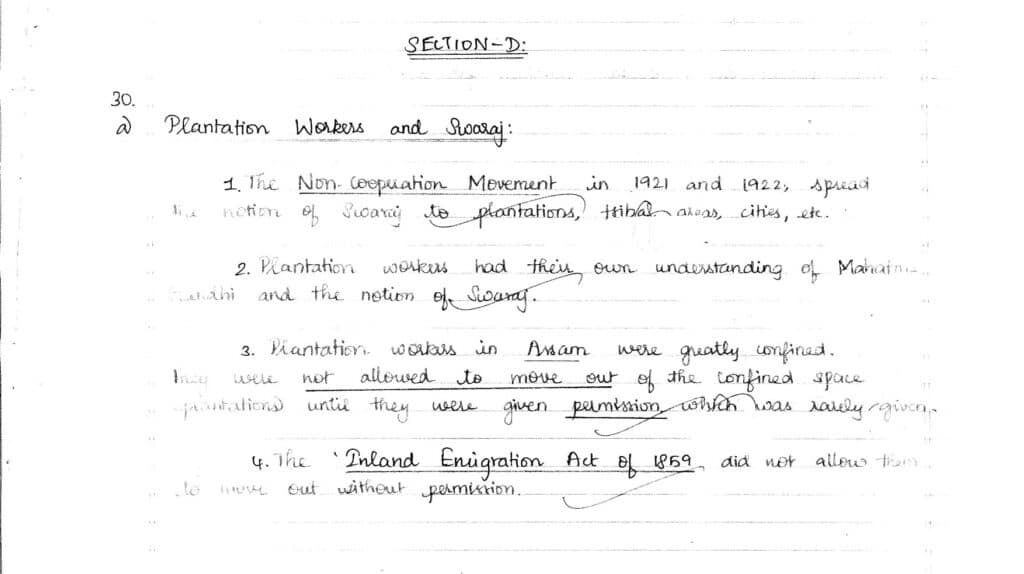
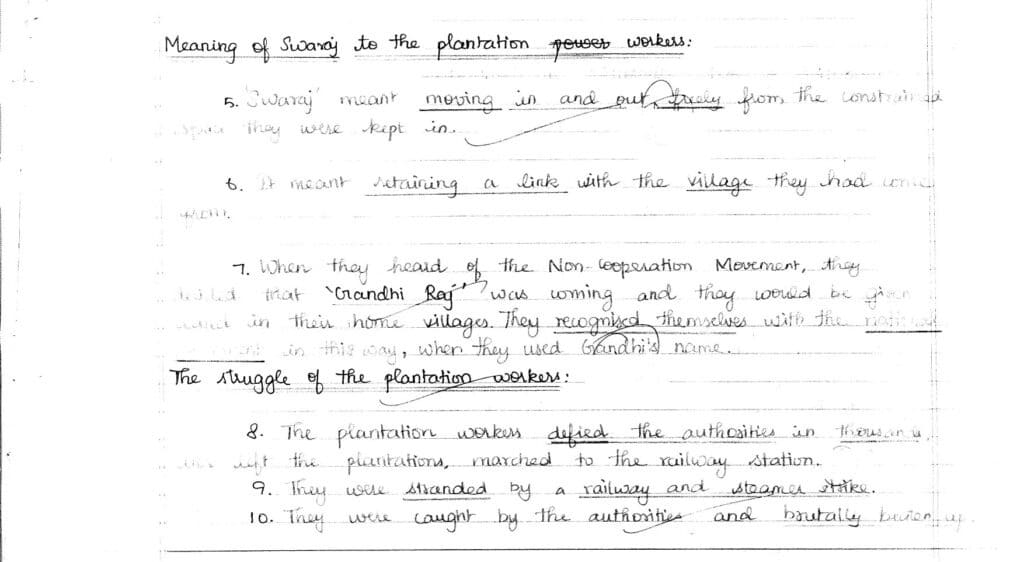
31. (a) Analyse the conditions under which democracies accommodate social diversities.
OR
(b) Analyse the conditions under which democracies promote dignity and freedom of citizens.
Ans.
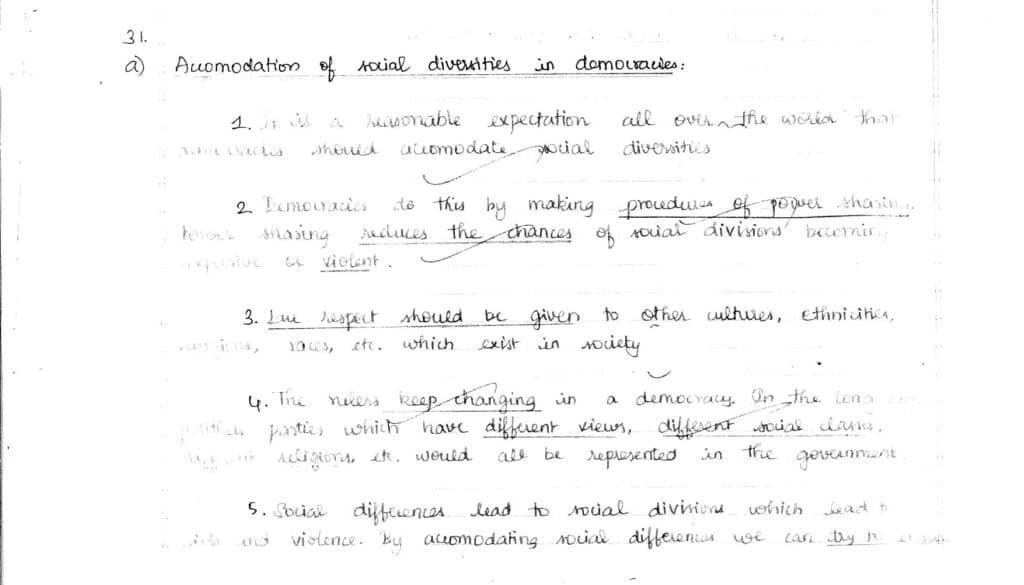
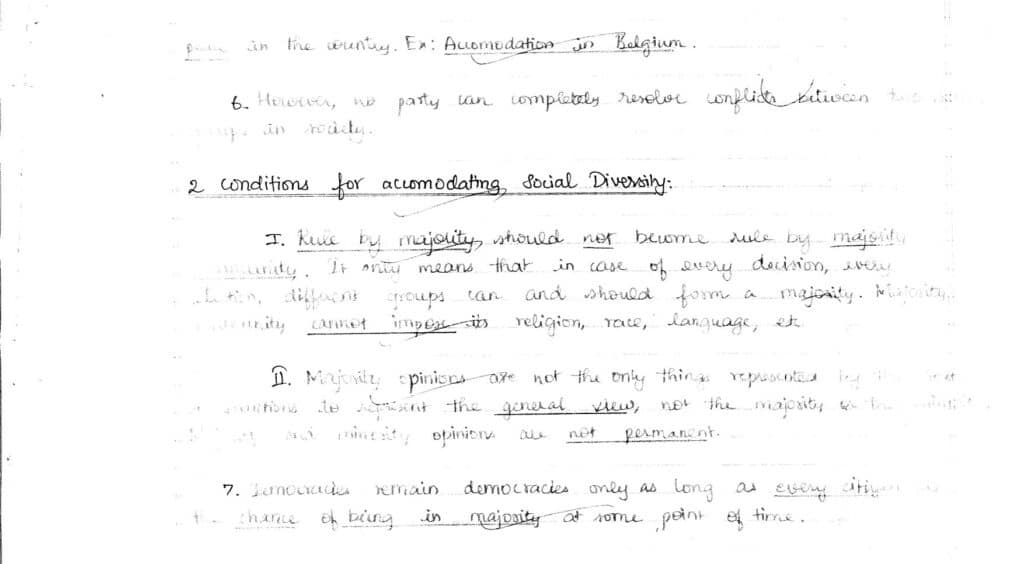

32. (a) Explain the features of primitive subsistence and commercial farming in India.
OR
(b) Explain the features of intensive subsistence and plantation farming in India.
Ans.
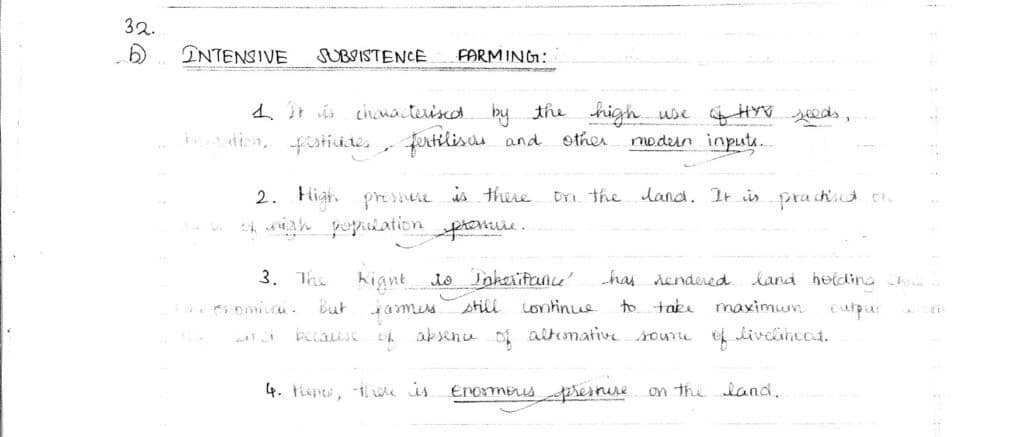
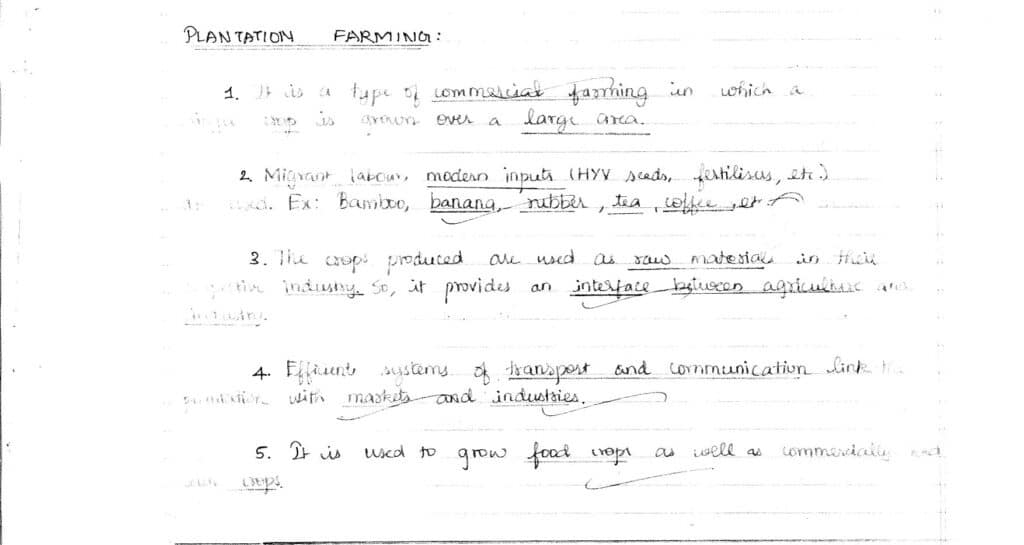
33. (a) Analyse the impact of globalisation on the Indian economy.
OR
(b) Analyse any five steps for ensuring fair globalisation in India.
Ans.
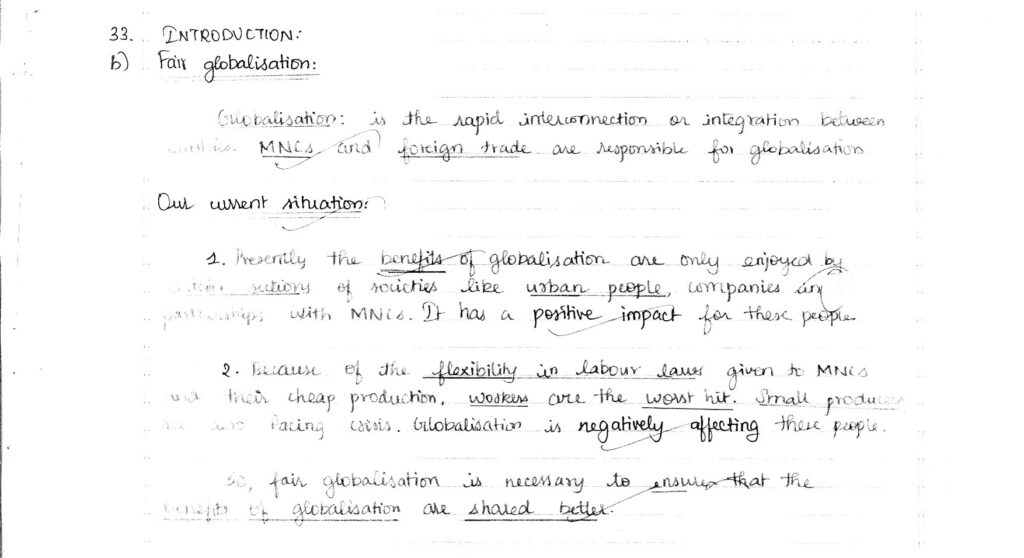
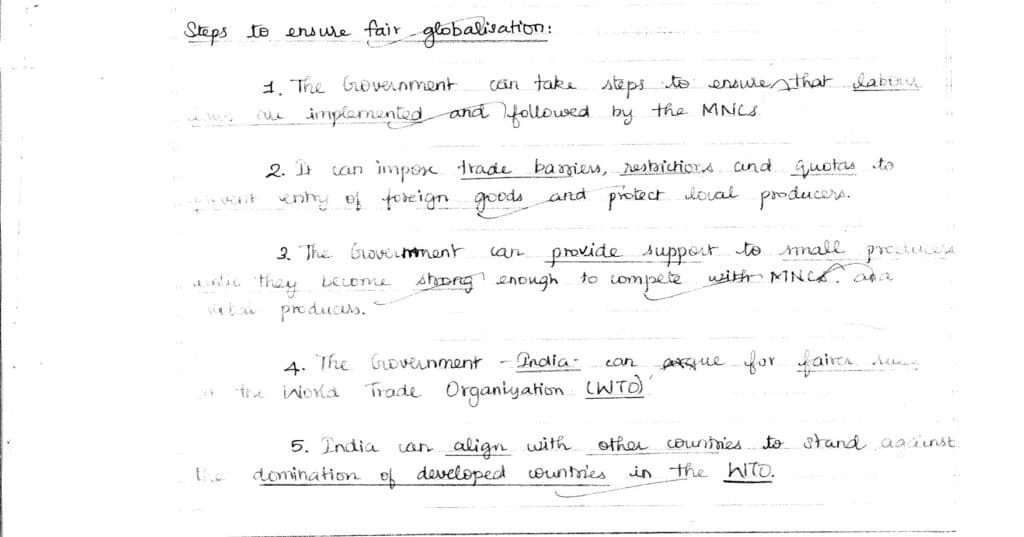
SECTION E
(Case-Based Questions) (3x4=12)
34. Read the given source and answer the questions that follow :
Most of the objections to the projects arose due to their failure to achieve the purposes for which they were built. Ironically, the dams that were constructed to control the floods have triggered floods due to sedimentation in the reservoir. Moreover, the big dams have mostly been unsuccessful in controlling floods at the time of excessive rainfall. You may have seen or read how the release of water from the dams during heavy rains aggravated the flood situation in Maharashtra and Gujarat in 2006. The floods have not only devastated life and property but also caused extensive soil erosion. Sedimentation also meant that the flood plains were deprived of silt, a natural fertiliser, further adding on to the problem of land degradation. It was also observed that the multi-purpose projects induced earthquakes, caused water-borne diseases and pests and pollution resulting from excessive use of water.
(34.1) Name the movement against the river project in Gujarat.
(34.2) How have the big dams mostly been unsuccessful in controlling floods at the time of excessive rainfall?
(34.3) Analyse any two merits of multi-purpose river projects.
Ans.


35. Read the given source and answer the questions that follow:
Yet, till the First World War, industrial growth was slow. The war created a dramatically new situation. With British mills busy with war production to meet the needs of the army, Manchester imports into India declined. Suddenly, Indian mills had a vast home market to supply. As the war prolonged, Indian factories were called upon to supply war needs: jute bags, cloth for army uniforms, tents and leather boots, horse and mule saddles and a host of other items. New factories were set up and old ones ran multiple shifts. Many new workers were employed and everyone was made to work longer hours. Over the war years industrial production boomed.
After the war, Manchester could never recapture its old position in the Indian market. Unable to modernise and compete with the US, Germany and Japan, the economy of Britain crumbled after the war. Cotton production collapsed and exports of cotton cloth from Britain fell dramatically. Within the colonies, local industrialists gradually consolidated their position, substituting foreign manufacturers and capturing the home market.
(35.1) Why did Manchester imports decline in India?
(35.2) Why could Manchester never recapture its old position in the Indian market after the First World War?
(35.3) Analyse any two benefits of the First World War to India.
Ans.

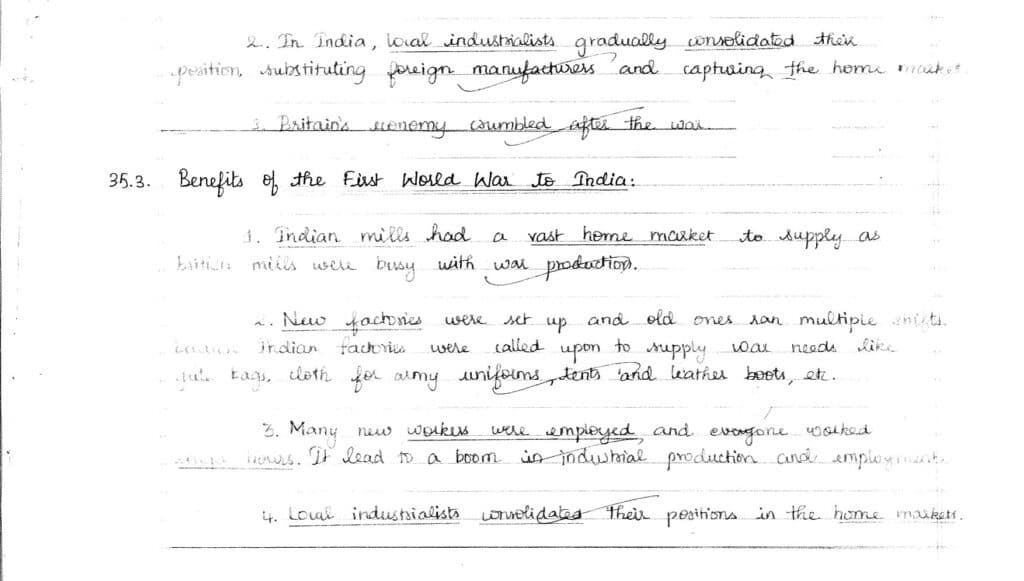
36. Read the given source and answer the questions that follow:
The rise of political parties is directly linked to the emergence of representative democracies. As we have seen, large societies need representative democracy. As societies became large and complex, they also needed some agency to gather different views on various issues and to present these to the government. They needed some ways, to bring various representatives together so that a responsible government could be formed. They needed a mechanism to support or restrain the government, make policies, justify or oppose them. Political parties fulfil these needs that every representative government has. We can say that parties are a necessary condition for a democracy.
(36.1) Explain the meaning of a political party.
(36.2) "The rise of political parties is directly linked to the emergence of representative democracies." Support this statement.
(36.3) Why are political parties a necessary condition for a democracy? Explain.
Ans.
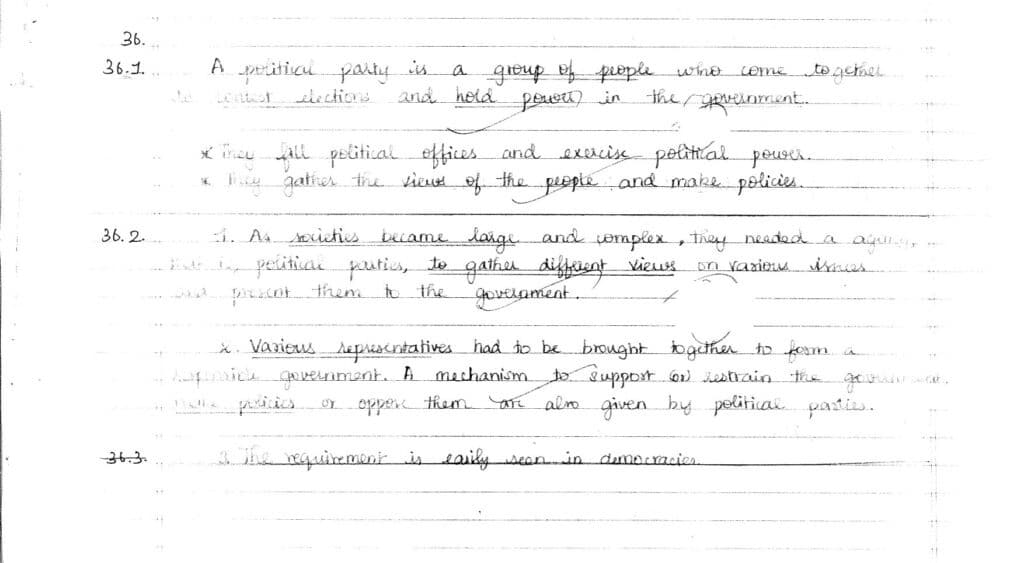
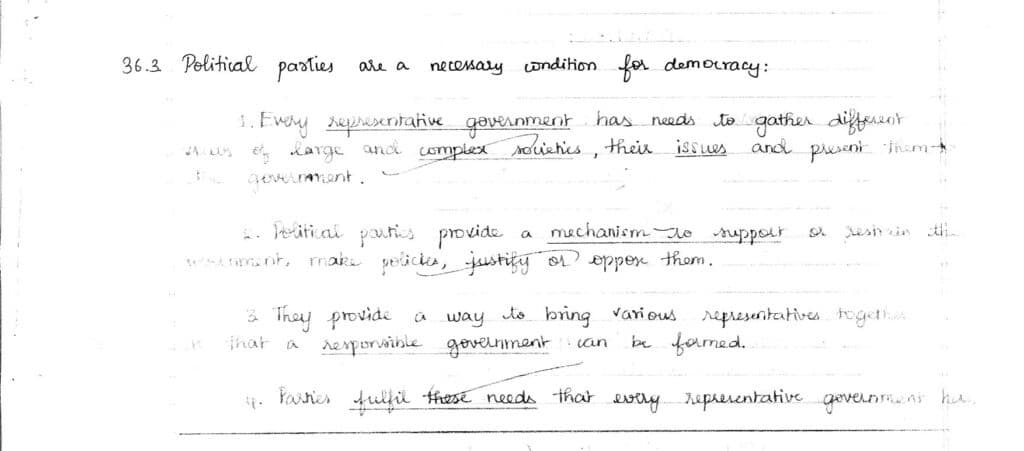
SECTION F
(Map Skill Based Question) (2+3=5)
37. (a) Two places A and B have been marked on the given political outline map of India. Identify them with the help of the following information and write their correct names on the lines drawn near them:
(i) The place where the session of the Indian National Congress was held in December, 1920.
(ii) The place where Jallianwala Bagh incident occurred.
(b) On the same political outline map of India, locate and label any three of the following with suitable symbols:
(i) Noida Software Technology Park
(ii) Bailadila Iron-ore mines
(iii) Tarapur Nuclear Power Plant
(iv) Haldia Sea port
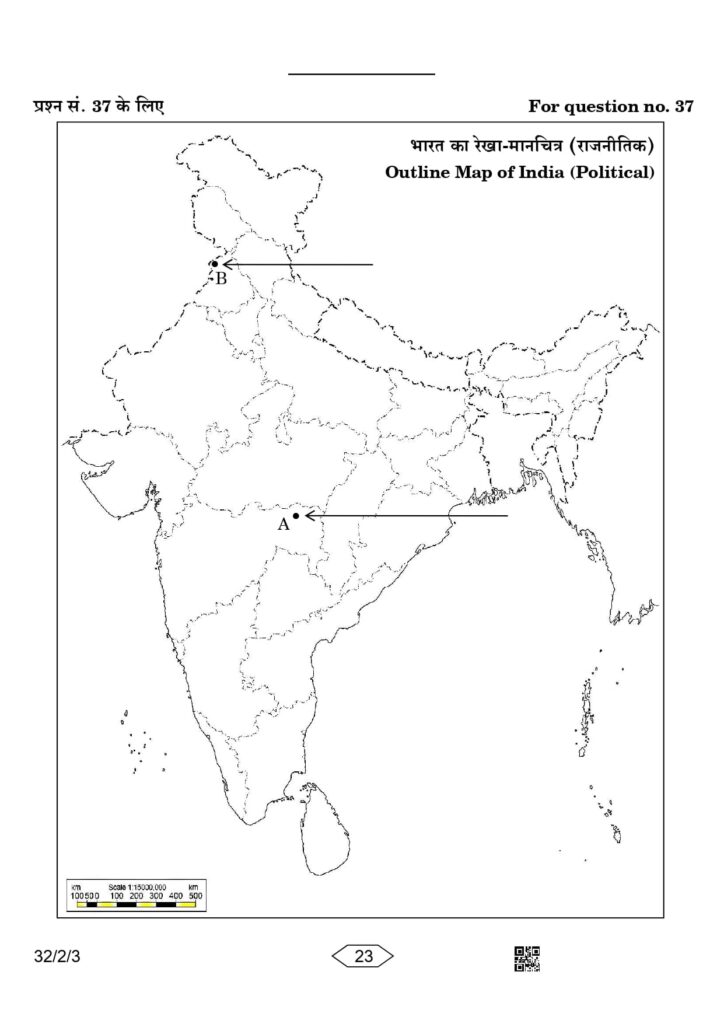
Ans.
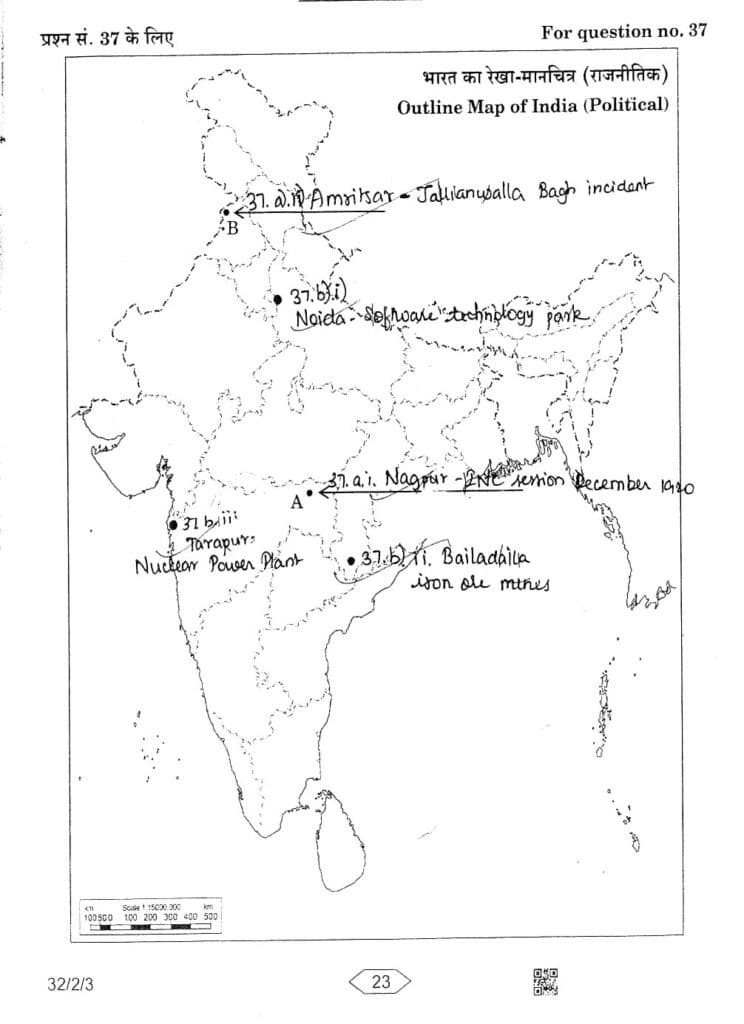
Also Read:
PDF of CBSE Class 10 Social Science Board's Question Paper 2023
32_2_3-Social-SciencePDF of CBSE Class 10 Social Science Topper's Answer Sheet 2023
Social_Science_087-1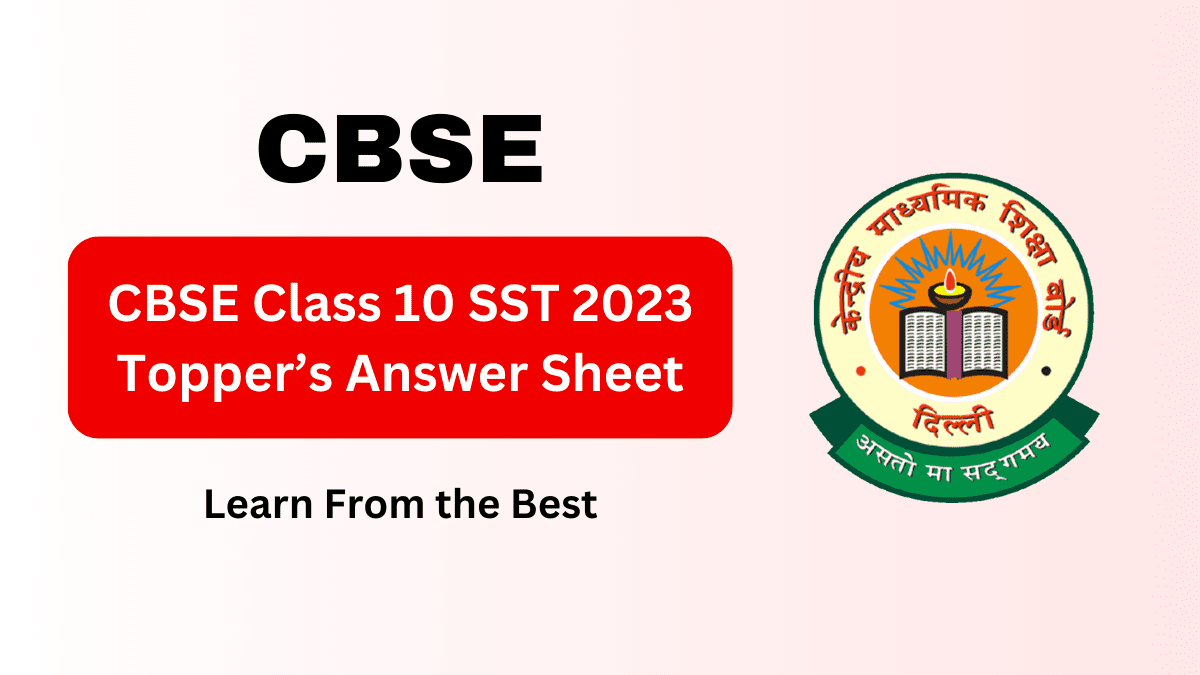
Thank you so much sir for your warm support
Answer correct are not visible please check it
Why the topper are exceeding the word limit
?
They too know that on exceeding word limit they are not going to get extra marks than whyyy they are doing so ?
The answer key may have different points for the questions in which we have to write only 2 or 3 point,hence it is advisable to write all the points related to it
Please sir aap se Instagram par baat kar hai